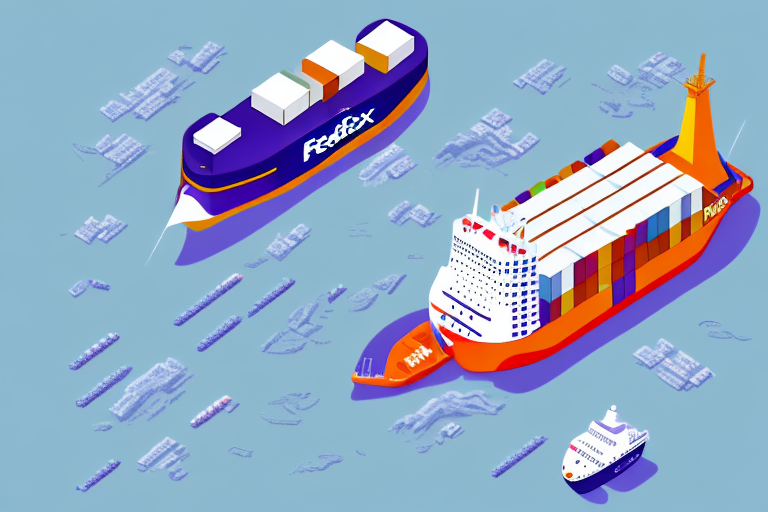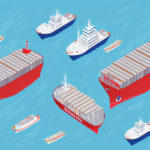Understanding International Shipping Rates for FedEx
International shipping is a critical component of global commerce, enabling businesses to reach customers worldwide. Among the leading providers, FedEx stands out for its exceptional international shipping services. FedEx offers a diverse range of shipping options, accommodating everything from small packages to bulky cargo. This article provides an in-depth analysis of how FedEx calculates international shipping rates and the various factors that influence these costs.
How FedEx Calculates International Shipping Rates
FedEx determines the cost of international shipping based on several key factors: weight, size, destination, and chosen shipping service. The company utilizes a volumetric weight calculation, taking into account the package's dimensions—length, width, and height—to assess the shipping cost. This method ensures that larger, lightweight packages are charged appropriately based on the space they occupy rather than just their actual weight.
To calculate volumetric weight, FedEx uses the formula:
Volumetric Weight (kg) = (Length cm x Width cm x Height cm) / 5000
The higher value between the actual weight and the volumetric weight is used to determine the final shipping cost. For example, if a package has an actual weight of 10 kg but a volumetric weight of 15 kg, the shipping rate will be based on 15 kg.
Distance is another crucial factor. The farther the destination from the origin, the higher the shipping cost. Additionally, FedEx may impose extra fees such as customs duties and taxes, particularly when shipping to regions with stringent import regulations.
The type of shipping service selected also impacts the cost. FedEx offers various services, including FedEx International Priority, FedEx International Economy, and FedEx International First. Express services like International Priority are faster but come at a higher price point, whereas economy options are more affordable but take longer to deliver.
Lastly, the declared value of the package affects the shipping cost. FedEx provides insurance options for high-value items, which can increase the overall expense. Accurate declaration of the package's value is essential to ensure proper coverage and to avoid unexpected charges.
Factors that Affect International Shipping Rates
Multiple factors influence the cost of shipping international packages with FedEx:
- Weight and Size: Larger and heavier packages cost more to ship. Efficient packing can help minimize volumetric weight and reduce costs.
- Distance: Shipping to destinations further from the origin country incurs higher fees.
- Shipping Method: Expedited shipping services are more expensive than standard or economy options.
- Type of Goods: Hazardous, fragile, or restricted items may require special handling, increasing the shipping cost.
- Customs Regulations: Different countries have varying import laws, which can affect shipping costs due to duties and taxes.
According to FedEx's 2023 shipping report, international shipping costs have risen by an average of 5% due to increased fuel prices and fluctuating exchange rates.
Differences between FedEx's International and Domestic Shipping Rates
FedEx's domestic and international shipping rates are calculated differently to account for the complexities of crossing borders. While domestic rates focus primarily on package weight and size, international rates factor in additional elements such as:
- Distance: International shipments account for greater distances between origin and destination.
- Customs Duties and Taxes: These are exclusive to international shipping and vary by country.
- International Trade Agreements: These can influence shipping rates based on trade relations between countries.
Furthermore, international shipments often require more comprehensive tracking and insurance options. While domestic shipments may include standard tracking, international shipments benefit from FedEx's advanced tracking tools that provide real-time updates across borders.
Understanding FedEx's Shipping Zones and Their Impact on Rates
FedEx employs a zonal pricing system to determine shipping rates. Regions are assigned specific zones based on their geographical distance from the origin point. Generally, shipping to closer zones results in lower costs, while shipping to more distant zones incurs higher fees.
For instance, Zone 1 might include nearby countries, whereas Zone 8 covers regions much farther away. According to FedEx's 2023 zone chart, shipping from the United States to Europe typically falls under Zone 3, whereas shipping to Asia might fall under Zone 6 or higher, affecting the overall shipping cost.
Package size and weight also influence the rate within each zone. Larger and heavier packages within the same zone will cost more than smaller, lighter ones. Additionally, certain items may face restrictions or prohibitions in specific zones, impacting both cost and delivery time.
How to Compare FedEx's International Shipping Rates with Other Carriers
To ensure you're getting the best deal on international shipping, it's essential to compare FedEx's rates with those of other carriers like UPS, DHL, and USPS. Consider the following factors when making comparisons:
- Package Size and Weight: Different carriers have varying pricing structures based on size and weight.
- Destination: Shipping rates can vary significantly depending on the destination country.
- Shipping Times: Faster delivery options typically cost more.
- Additional Services: Services like tracking, insurance, and customs clearance can affect overall costs.
According to a 2023 study by Business Insider, FedEx often provides competitive rates for urgent shipments compared to DHL, which may offer lower rates for bulk or less time-sensitive shipments.
Additionally, consider the carrier's reputation for reliability and customer service. Reading customer reviews can provide insights into how well a carrier handles shipments and resolves issues.
Tips for Reducing Your International Shipping Costs with FedEx
Minimizing international shipping costs with FedEx involves strategic planning and efficient practices:
- Efficient Packaging: Use appropriately sized packaging to reduce volumetric weight. Consolidate shipments when possible to lower costs per unit.
- Leverage Discounts and Promotions: FedEx offers various discounts for volume shipments, loyal customers, and seasonal promotions. Check FedEx's discount page regularly for available offers.
- Understand Customs Regulations: Properly preparing your shipments by complying with customs regulations can prevent unexpected fees and delays. Utilize FedEx's customs tools to estimate duties and taxes accurately.
The Benefits of Using FedEx for Your International Shipping Needs
FedEx offers numerous advantages for international shippers:
- Extensive Global Network: With a presence in over 220 countries and territories, FedEx ensures wide coverage and reliable delivery worldwide.
- Reliable Delivery Times: FedEx's efficient logistics infrastructure guarantees timely deliveries, crucial for time-sensitive shipments.
- Advanced Tracking: FedEx's tracking tools provide real-time updates, enhancing transparency and allowing customers to monitor their shipments closely.
- Customizable Shipping Services: From express options to economy services, FedEx accommodates various shipping needs and budgets.
According to the Forbes Global Logistics Report 2023, FedEx's robust infrastructure and commitment to innovation make it a preferred choice for international shipping.
How to Avoid Additional Fees when Using FedEx for International Shipments
Additional fees such as customs duties, taxes, and other charges can significantly impact your international shipping costs. To avoid these extra expenses:
- Accurate Documentation: Ensure all shipping documents are complete and accurate. Incorrect or incomplete forms can lead to delays and additional fees.
- Correct Tariff Classification: Properly categorize your goods to avoid misclassification, which can result in higher duties or penalties.
- Avoid Restricted Items: Familiarize yourself with prohibited and restricted items for each destination country to prevent shipment seizure or fines.
FedEx's customs resources provide guidance on documentation and regulations, helping you navigate the complexities of international shipping.
Additionally, comparing different shipping methods and carriers can help you find more cost-effective options. For example, while FedEx is known for its reliability, other carriers might offer lower rates for specific routes or shipment types.
Staying informed about the destination country's specific import regulations is also essential. Regularly consult resources like the U.S. Customs and Border Protection to stay updated on any changes that could affect your shipments.
Understanding the Customs Clearance Process and Its Impact on International Shipping Rates with FedEx
The customs clearance process is a pivotal step in international shipping, involving the assessment of a shipment's contents, valuation, and compliance with local laws and regulations. FedEx assists shippers by providing necessary forms and guidance to streamline this process.
Accurate and timely documentation is crucial. Delays or errors in paperwork can lead to additional charges or even the return or seizure of the shipment. FedEx offers tools like the Customs Clearance Tools to help estimate duties and taxes, ensuring you're prepared for all potential costs.
Customs duties and taxes are calculated based on the shipment's declared value and its country of origin and destination. According to the World Bank's Trade Report 2023, proper classification and valuation can reduce unnecessary fees, making it essential to understand the specific import tariffs applicable to your goods.
Moreover, certain items may be subject to restrictions or bans in particular countries. FedEx provides comprehensive lists of prohibited and restricted items, helping you avoid shipments that could be delayed or confiscated. Ensuring compliance with these regulations not only prevents additional fees but also fosters smoother and more efficient delivery processes.
Best Practices for Packaging Your Items to Reduce International Shipping Costs with FedEx
Effective packaging is vital for minimizing international shipping costs with FedEx. Here are some best practices:
- Use Appropriate Packaging: Select packaging designed for shipping, such as sturdy boxes, tubes, or envelopes. Avoid overpacking, which can increase the package's size and weight.
- Optimize Package Size: Compact packaging reduces volumetric weight, directly lowering shipping costs. Utilize space-saving materials like bubble wrap or air pillows.
- Secure Packaging: Ensure boxes are tightly sealed with strong tape to prevent damage during transit. Proper sealing also helps maintain package integrity.
- Label Clearly: Clearly label packages with accurate shipping information and any necessary handling instructions to avoid delays and additional fees.
By adhering to these packaging best practices, you can enhance the safety and efficiency of your shipments while also reducing costs. According to FedEx's Packaging Guide, properly packaged shipments are less likely to incur damages or additional handling fees.
In conclusion, understanding and optimizing international shipping rates with FedEx involves a combination of strategic planning, efficient packaging, and thorough knowledge of customs regulations. By implementing the best practices outlined in this article, businesses can effectively manage their shipping costs and ensure reliable delivery of their international shipments.




















